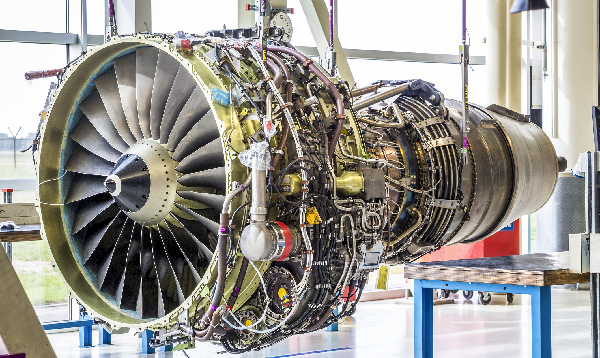It’s not often that an invention that’s been used by multiple industries for nearly two centuries is cleverly tweaked to hugely improve its performance, giving it the potential to alter a range of markets.
But that’s what happened when Cambridge Enterprise licensed a revolutionary thermocouple cable technology to TE Wire & Cable LLC, part of the Marmon Group/Berkshire Hathaway, in October 2016.
A thermocouple is a simple electrical device used to measure temperature. Robust, inexpensive and able to measure wide temperature ranges, thermocouples are used in a range of domestic and industrial applications, from toasters and ovens to jet engines. However with continued use at elevated temperatures a problem known as “drift” occurs in standard thermocouples, where the temperature recorded by the thermocouple gradually moves away from the actual temperature, giving a misleading result. So to reliably measure temperatures above 1000°C, standard thermocouples need to be replaced more frequently. As more and more industrial systems operate above 1000°C, ensuring the accurate measurement of a temperature in this range is becoming a problem.
Even though this is a completely new technology for us, TE Wire is well positioned to promote it to our customers and corresponding applications. Our depth of application knowledge and industry ties in heat treatment and the aerospace world will allow us to refine this technology in cooperation with forward-thinking customers.
Robert Canny, President of TE Wire & Cable
This problem has been solved by a new thermocouple design developed by Dr Michele Scervini and Professor Cathie Rae, both at the Department of Materials Science and Metallurgy at the University of Cambridge. The work that led to the development of this technology was supported by various European grants, and hugely benefited from Professor Cathie Rae’s long term relationship with the aviation industry through her work on superalloys.
A standard thermocouple consists of two wires made from different types of metal, joined at one end to create a junction where the temperature is measured. These wires are enclosed in a protective external sheath to isolate the thermocouple from the local atmosphere, and prevent the oxidation of the internal thermocouple wires. Commonly the alloys used in the external sheath contain manganese.
The inventors realised that at high temperatures, alloying elements such as manganese migrate out of the external sheath and enter the thermocouple wires, changing the properties of the wires. This causes the drift in temperature performance of the thermocouple. This breakthrough in understanding resulted in them developing a new thermocouple design with a second sheath inside the first. This second sheath soaks up the manganese and prevents them from migrating into the thermocouple wires. This vastly improves the accuracy of the thermocouple, making it ideal for high temperature applications. The new design also lasts longer, improving maintenance turnaround times.
This licence was the culmination of over six years of outreach, negotiations and product development. The process was lengthy: the supply chain for thermocouples is complex, with no single supplier handling all the potential customers. The inventors and Cambridge Enterprise had multiple discussions with a number of potential licensees. Several companies collaborated with the inventors to test the thermocouple performance over long periods of time. Finding the right company to work with on a long term basis was a challenge. Licensing to a single company could limit the reach of the technology to one niche market; licensing to several companies would allow the technology to reach more markets, but would necessitate more complex licensing arrangements. In TE Wire, Cambridge Enterprise found the ideal partner to develop this technology, due to its readiness to adopt new technologies and its access to a wide customer base, including the aviation, nuclear and heat treatment industries.
The potential reach for this technology is huge. The first customers of this innovation are likely to be companies that carry out heat treatment processes for novel metallurgical components such as turbine blades. The new thermocouple could also find uses in power stations to measure gas turbine temperatures. Longer term, the new thermocouple is likely to be an important component in jet engine design. Developing new components for an aircraft is difficult, as there are so many stringent regulations surrounding the industry – and with good reason. But as the new thermocouple technology is more widely adopted, this builds a case for regulations to be changed to allow for the use of these improved thermocouples in the aviation industry. There is even potential for this technology to reach the consumer market via engine temperature monitoring in turbo truck and diesel engines.
Robert Canny, President of TE Wire & Cable, notes, ‘Even though this is a completely new technology for us, TE Wire is well positioned to promote it to our customers and corresponding applications. Our depth of application knowledge and industry ties in heat treatment and the aerospace world will allow us to refine this technology in cooperation with forward-thinking customers.’




